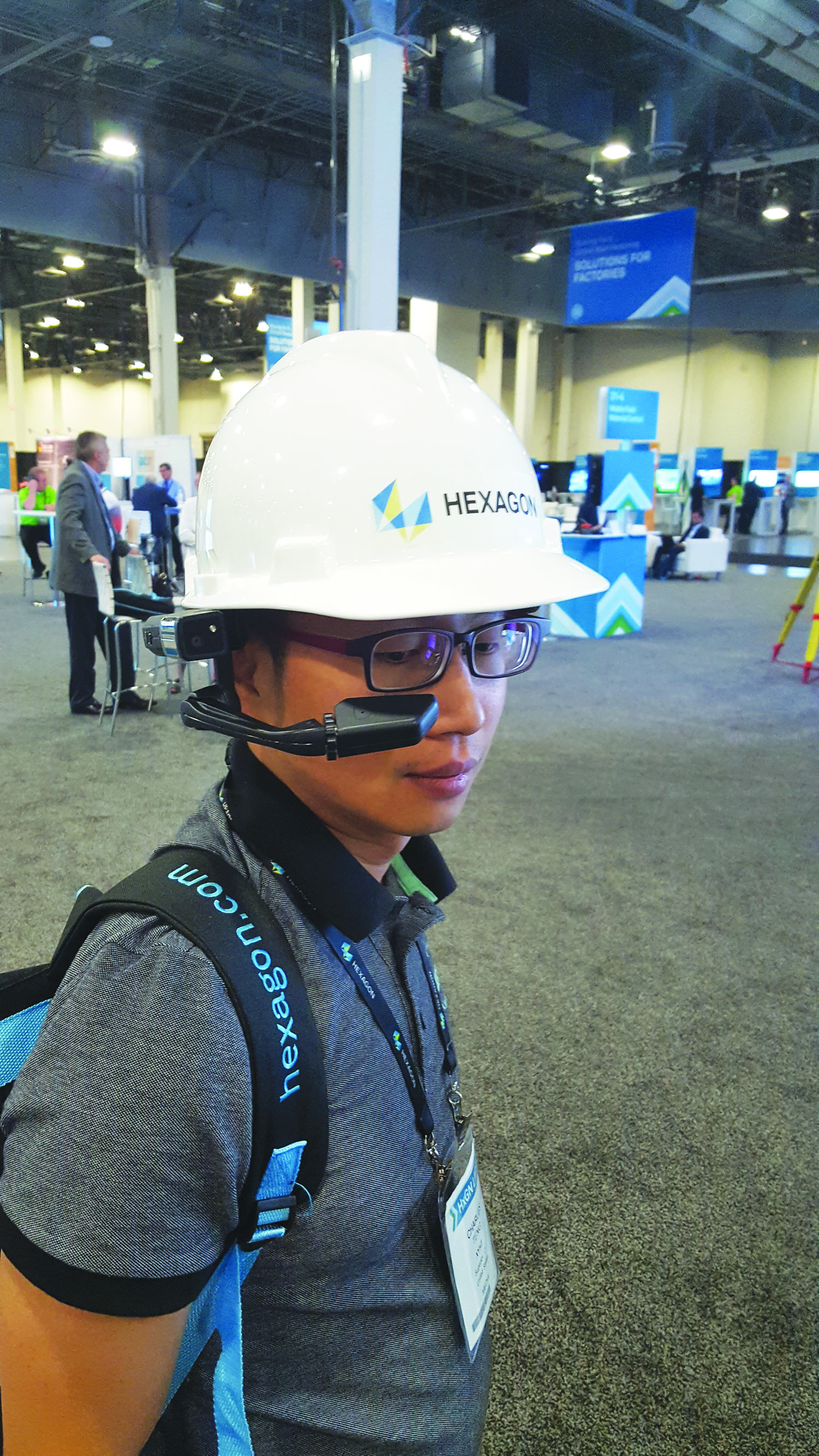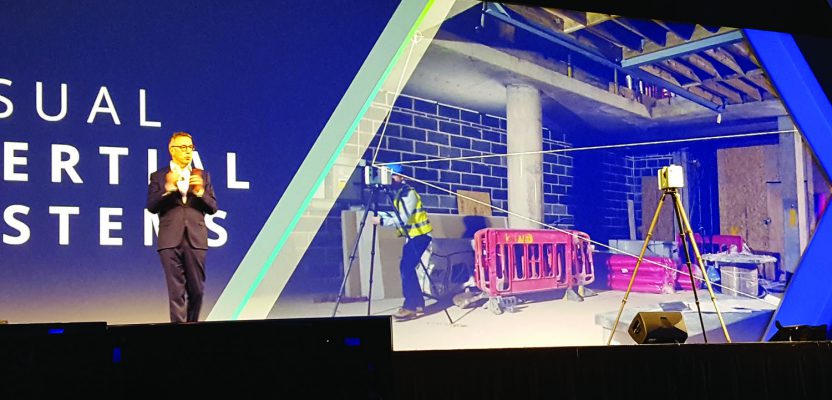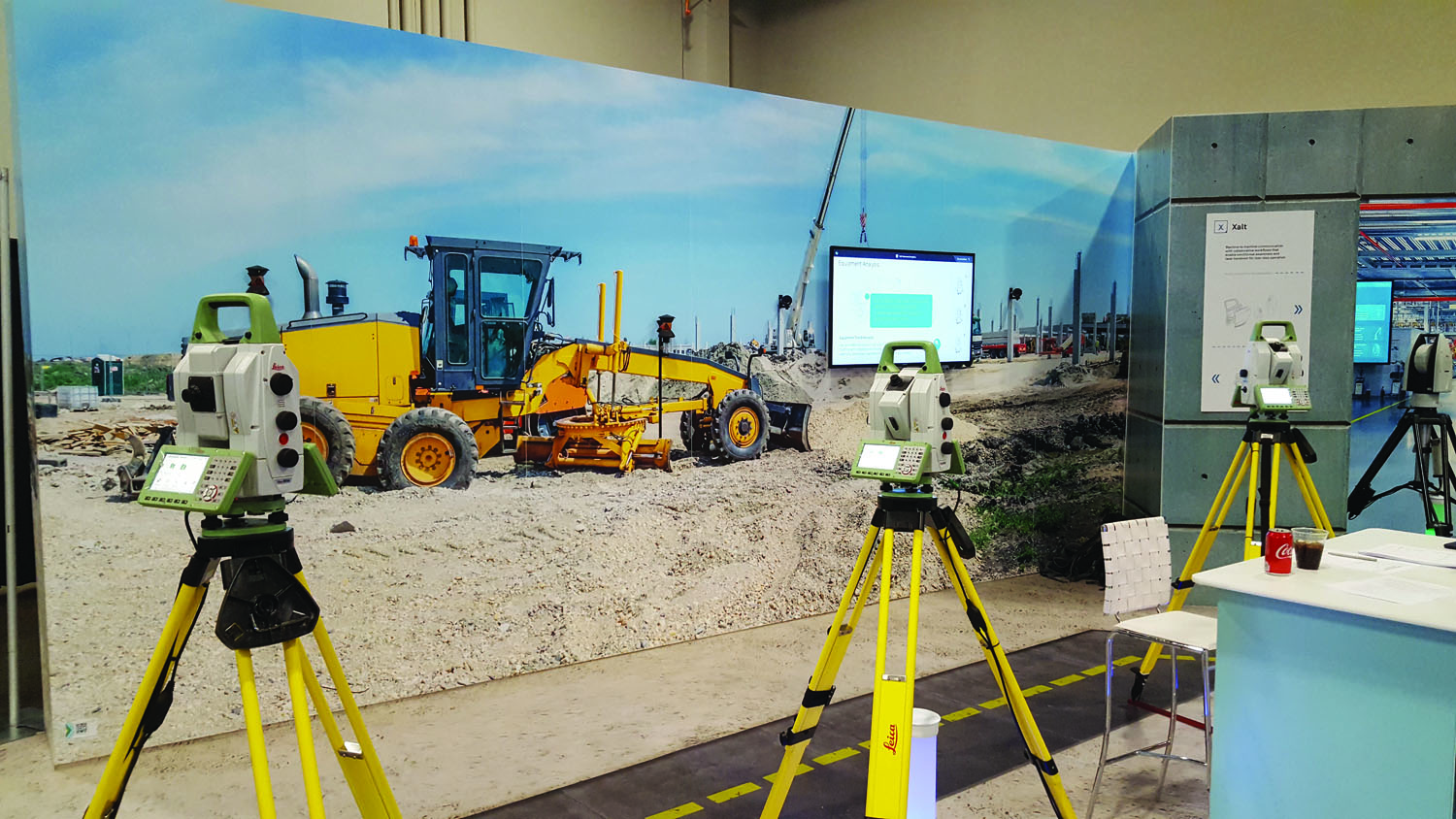Juergen Dold, president of Hexagon’s geosystems division, walked onstage to deliver his annual keynote at the 2018 HxGN LIVE conference and exhibition, toting a small school-sized backpack. During the course of the keynote he pulled two new products from the backpack.
BLK3D
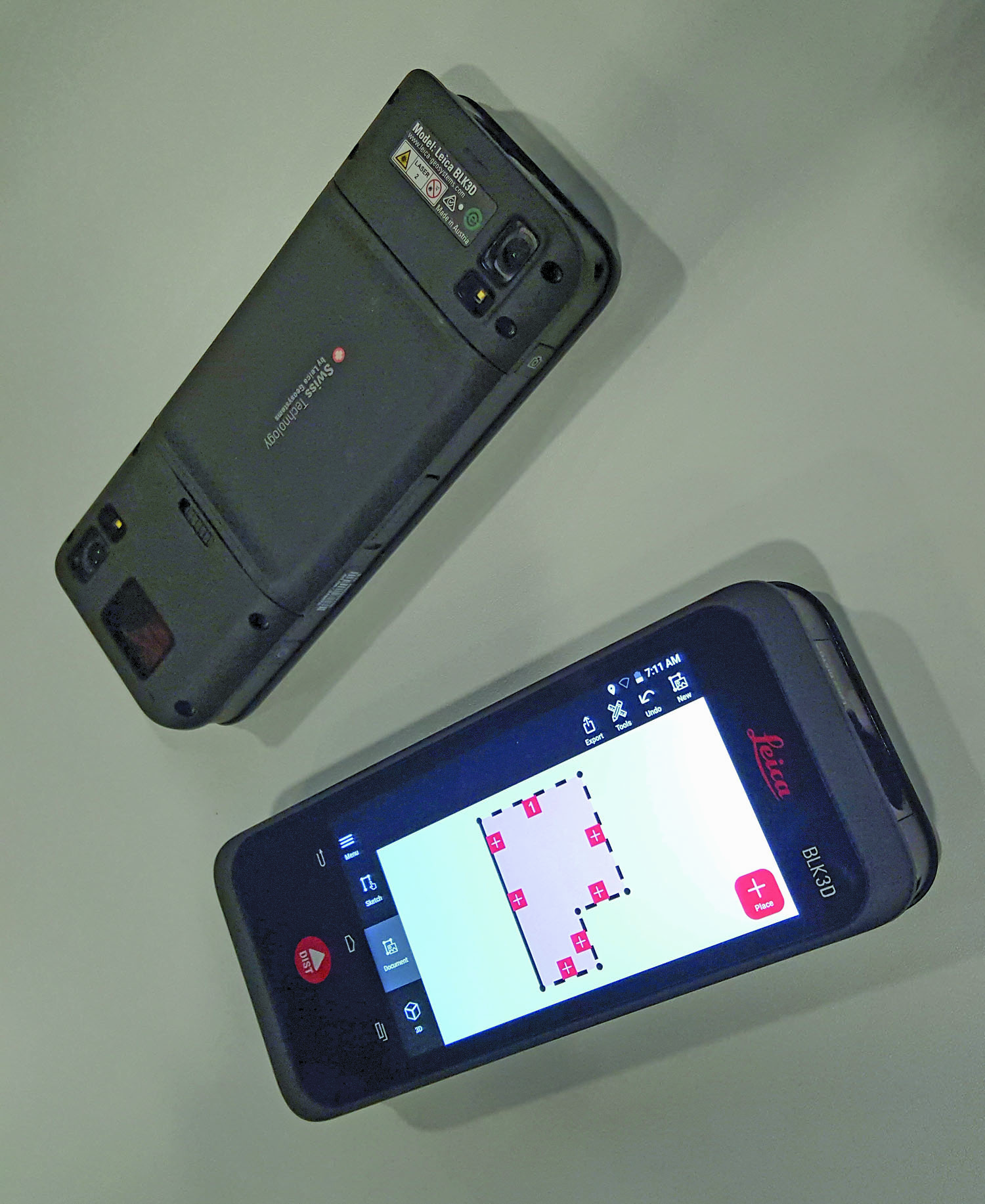 The first was the BLK3D, a pocket-sized 3D measurement device built for rapid and accurate measurement of structures for BIM, construction, preliminary design, as-built, and more.
The first was the BLK3D, a pocket-sized 3D measurement device built for rapid and accurate measurement of structures for BIM, construction, preliminary design, as-built, and more.
You’ve probably seen the plethora of smart-phone-based apps used to provide (rough) on-the-fly measurements, most using some kind of image-offset, color-shift, or pixel-size-at-range techniques. I’ve tried over a dozen phone measurement apps and snap-on devices; while impressive for fit-for-purpose tasks, they are mostly limited to 2D measurements for features perpendicular to the view, and are not able to measure out/depth for true 3D—only real photogrammetry or a scanner can do that.
Johannes Hotz of the Lecia Geosystems BLK business development team said that a smartphone platform was too restrictive, so they built a dedicated hand-held that has a stereo-camera system, separated on chassis to enable true photogrammetric techniques. You are ready to roll with in-viewer 3D measurements as soon as you point it.
It comes with a ranging laser, and you can even use the IMU to map a room by holding it on each wall and it locates them via inertial offsets in the on-board mapping app.
RTC369
Next out of Dold’s backpack was the RTC360 3D laser scanner, a compact and scary-fast scanner that does registration on the fly. Using an image-augmented IMU, cameras identify optimal registration points (from objects in view, no targets needed). It keeps an eye on those while you pick up the scanner and move it to the next setup. With sharply defined objects in common from the new setup location, the scans are automatically registered.
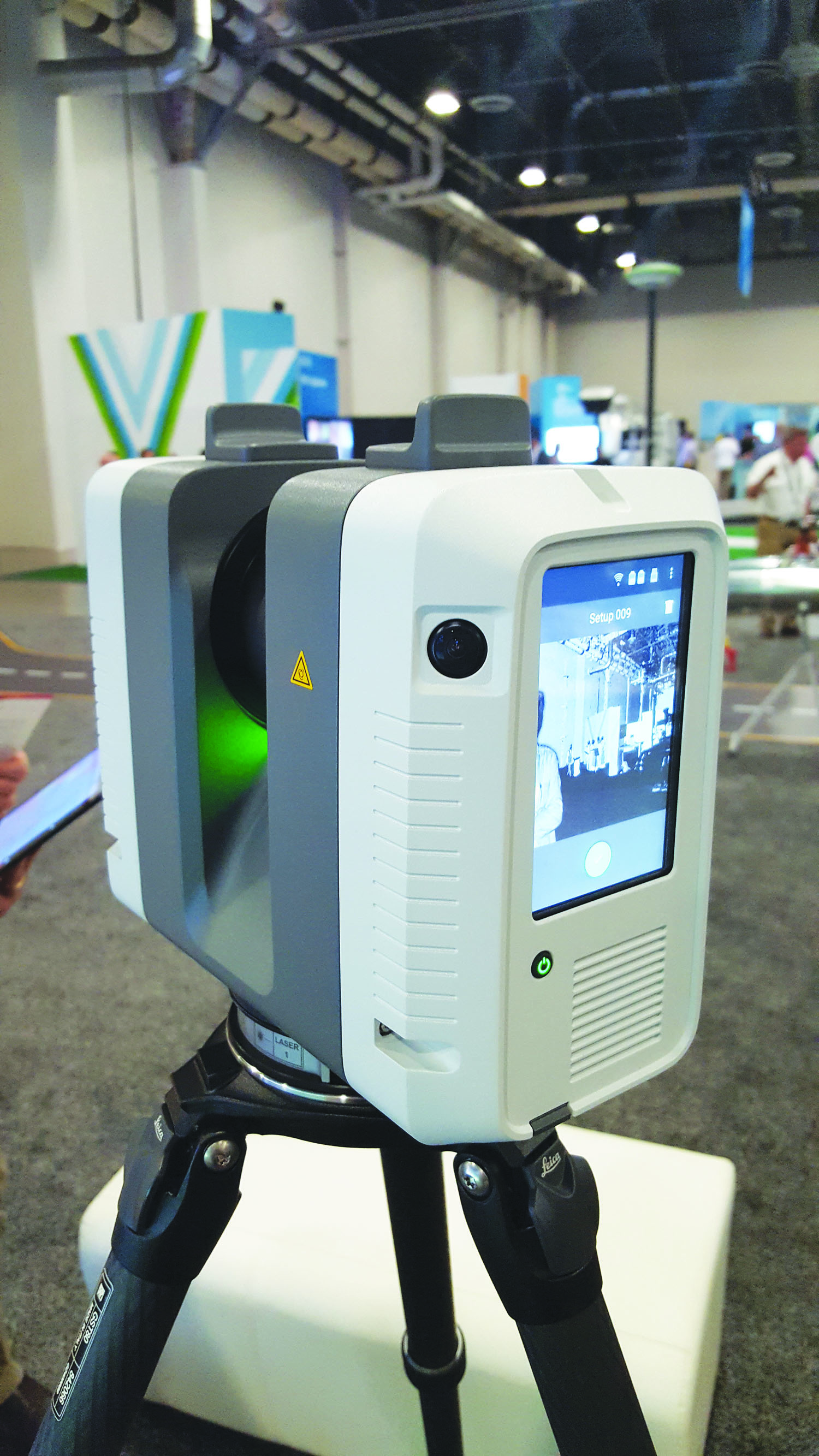
The scanner collects up to 2 million points per second. While it doesn’t have the longer range of larger (more expensive) units, it is suited for small/medium sites and especially the BIM market. To achieve these capabilities it has several ground-breaking innovations including a curved laser deflection surface and dedicated cameras for the image- augmented registration.
We tried it out: scanned in under two minutes, did a quick photocycle, picked up the scanner on the tripod, walked to the next setup down the hall, and started another scan immediately—registered on the fly. The trajectory of the scanning market is (and always has been) toward speed, simplicity of workflow, and reliability, but the familiar visual form factor of this mid-sized scanner belies its potential impact to the industry.
This is a harbinger of things to come, and for many users, there will be no turning back to legacy scanning workflows.
ACE
ACE is an acronym you will hear more about. We may all be getting used to concepts like the cloud, but now Hexagon is giving us a glimpse of what will likely be the next disrupter in the geospatial industry.
Hexagon CEO Ola Röllen said that autonomous connected ecosystems (ACE) is like virtual “wires between things, very smart wires that know what data to send and when, but that can also decide when they need to send different data and commands as conditions and needs change.”
By using not just the cloud but techniques like edge and frontier computing, plus machine learning and deep learning, groups of instruments and computing resources can act as an autonomous entity performing tasks that require some level of independent decision-making and troubleshooting.
One of the examples in the exhibit was a group of total stations with redundant software running on the respective native processors (pictured above). In a scenario from a construction site, the total stations are monitoring multiple moving targets, and when the view is blocked for one the others know to take over and determine the best alternate shot (or shots).
This is not a standalone new product per se, but Hexagon uses the label Xalt for any such solutions it fast-tracks for customers or implements in products moving forward.
Hmt-1Z1
Also catching our eye (no pun intended) at HxGN: the hmt-1Z1 from Realwear (being test-driven by xyHt writer Charles Teng). This hands-free high-resolution display has been designed for construction and inspection tasks, built for rough environments, and fits on a standard hardhat.
